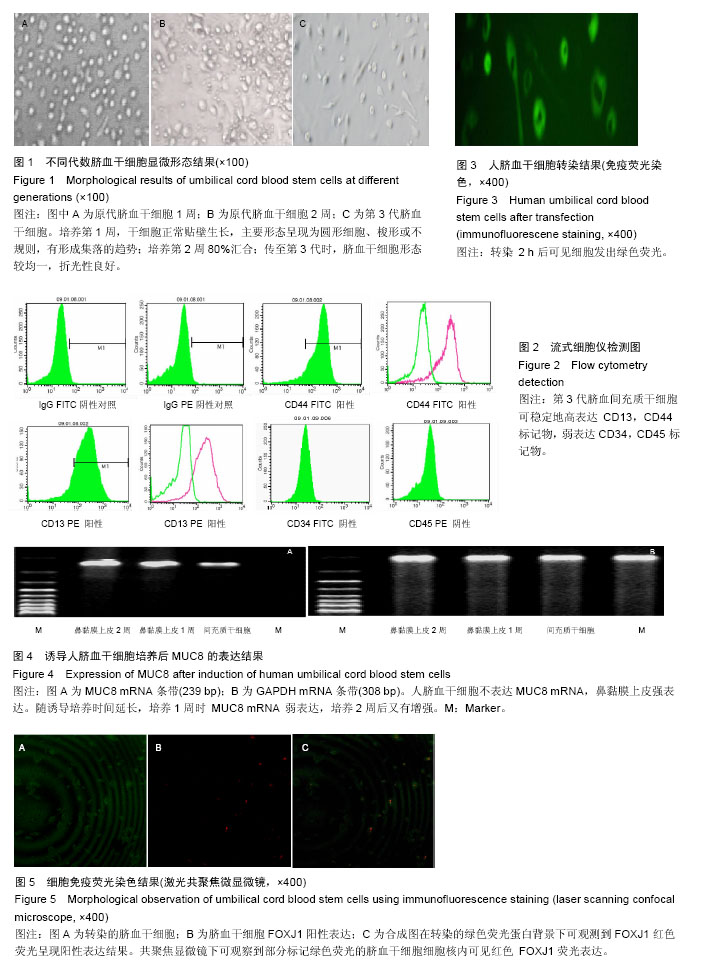| [1] 中华耳鼻咽喉头颈外科杂志编委会,中华医学会耳鼻咽喉头颈外科学分会鼻科学组.慢性鼻-鼻窦炎诊断和诊疗指南(2012年,昆明) [J].中华耳鼻咽喉头颈外科杂志, 2013,48(2):92-94.
[2] Claire H, Robert S, Valerie L, et al. Long-term outcomes from the English national comparative audit of surgery for nasal polyposis and chronic rhinosinusitis. Laryngoscope. 2009;119(12):2459-2465.
[3] Fan YP, Feng SY. Aspirin-exacerbated respiratory disease in China: a cohort investigation and literature review. Am J Rhinol Allergy 26:20-22.
[4] Dutta R, Dubal PM, Eloy JA. The connection between seasonal allergies, food allergies, and rhinosinusitis: what is the evidence? Curr Opin Otolaryngol Head Neck Surg. 2015;23(23):2-7.
[5] Martin EJ, Forkert PG. 1, 1-Dichloroethylene-induced mitochondrial damage precedes apoptotic cell death of bronchiolar epithelial cells in murine lung. J Pharmacol Exp Ther. 2005;313(1):95-103.
[6] 郭永清,赵小冬,杨占泉.气液界面培养的鼻黏膜上皮细胞的纤毛分化[J].临床耳鼻咽喉头颈外科杂志,2004,18(2): 88-90.
[7] 江英,席克虎,陈小婉,等.18β-甘草次酸对变应性鼻炎大鼠鼻黏膜纤毛超微结构的影响[J].第二军医大学学报, 2015, 36(1):26-33.
[8] 夏忠芳,孔维佳,乐建新,等.人正常鼻黏膜及鼻息肉黏膜上皮细胞的原代培养及鉴定[J].华中科技大学学报:医学版, 2008,37(4):541-543.
[9] 裴雪涛.干细胞生物学[M].北京:科学出版社,2003.
[10] Perrin L, Giuliani S, Sedrakyan S, et al. Stem cell and regenerative science application in the development of bioengineering of renal tissue. Pediatr Res. 2008;63(5): 467-471.
[11] Yamamoto Y, Banas A, Murata S, et al. A comparative analysis of the transcriptome and signal pathways in hepatic differentiation of human adipose mesenchymal stem cell. FEBS J. 2008;275(6):1260-1273.
[12] Urbán VS, Kiss J, Kovács J, et al. Mesenchymal stem cells cooperate with bone marrow cells in therapy of diabetes. Stem Cells. 2008;26(1):244-253.
[13] Cho KJ, Trzaska KA, Greco SJ, et al. Neurons derived from human mesenchymal stem cells show synaptic transmission and can be induced to produce the neuro-transmitter substance P by interleukin-1 alpha. Stem Cells. 2005;23(3):383-391.
[14] 裴雪涛.干细胞实验指南[M].北京:科学出版社,2006.
[15] Hanna J, Wernig M, Markoulaki S, et al. Treatment of sickle cell anemia mouse model with ips cells generated from autologous skin. Science. 2007;318: 1920-1923.
[16] Hirata Y, Sata M, Motomura N, et al. Human umbilical cord blood cells improve cardiac function after myocardial infarction. Biochem Biophys Res Commun. 2005;327:609-614.
[17] Rippon HJ, Lane S, Qin M, et al. Embryonic stem cells as a source of pulmonary epithelium in vitro and in vivo. Proc Am Thorac Soc. 2008;5:717-722.
[18] Chan KM, Raikwar SP, Zavazava N. Strategies for differentiating embryonic stem cells (ESC) into insulin-producing cells and development of non-invasive imaging techniques using bioluminescence. Immunol Res. 2007;39(1-3): 261- 270.
[19] Weiss DJ, Berberich MA, Borok Z, et al. Adult stem cells, lung biology, and lung disease. NHLBI/-Cystic Fibrosis Foundation Workshop. Proc Am Thorac Soc. 2006;3:193-207.
[20] Wang GS, Bunnell BA, Richard G. Painter et al. Adult stem cells from bone marrow stroma differentiate into airway epithelial cells: potential therapy for cystic fibrosis. PNAS. 2005;102(1):186-191.
[21] 张丽欣,邢利和,张丽丽,等.脐血干细胞移植治疗失代偿期肝硬化的临床效果研究[J].中国全科医学,2010,13(24): 2680-2682.
[22] 肖日军.脐血干细胞移植治疗糖尿病大鼠下肢缺血的实验研究[J].中华损伤与修复杂志:电子版,2012,7(1): 12-16.
[23] Kogler G, Sensken S, Airey JA, et al. A new human somatic stem cell from placental cord blood with intrincis pluripotent differentiation potential. J Exp Med. 2004;200:123-135.
[24] Sueblinvong V, Loi R, Philip L, et al. Derivation of lung epithelium from human cord blood-derived mesenchymal stem cells. Am J Respir Crit Care Med. 2008;177(3):701-711.
[25] 杜冀晖,张鲍虎,李蓉,等.人脐血干细胞蛛网膜下腔移植向神经干细胞分化的初步研究[J].国际检验医学杂志,2008, 29(8):676-678.
[26] 赵长青,安云芳,索利敏.脐血间充质干细胞体外分化鼻黏膜纤毛上皮细胞的研究[C].全国鼻部感染与变态反应专题学术会议,2011,(4):12-16.
[27] 张少丹,李武平.呼吸道上皮细胞模型的研究进展[J].病毒学报,2015,31(3):307-312.
[28] García-Gareta E. Collagen gels and the ‘Bornstein legacy’: from a substrate for tissue culture to cell culture systems and biomaterials for tissue regeneration. Exp Dermatol. 2014;23(7):473-474.
[29] Chaaban MR, Alexandra K, Rowe SM, et al. Cystic fibrosis chronic rhinosinusitis: a comprehensive review. Am J Rhinol Allergy. 2013;27(5):387-395.
[30] 籍凤宇,李佳佳,陈秀莉,等.脐血干细胞向不同体细胞分化的研究进展[J].生物技术通报,2012,28(1):30-36.
[31] Dursun E, Korkmaz H, Eryilmaz A, et al. Clinical pridictors of long-term success after endoscopic sinus surgery. Otolaryngol Head Neck Srug. 2003;129: 526-531.
[32] Jing Y, Jian-xiong Y. 3-D spheroid culture of bone marrow mesenchymal stem cell of rhesus monkey with improved multi-differentiation potential to epithelial progenitors and neuron in vitro. Clin Exp Ophthalmol. 2011;39(8):808-819.
[33] Askvig JM, Lo DY, Sudbeck AW, et al. Inhibition of the Jak-STAT pathway prevents CNTF-mediated survival of axotomized oxytocinergic magnocellular neurons in organotypic cultures of the rat supraoptic nucleus. Exp Neurol. 2013;240(1):75-87.
[34] Hirata Y, Sata M, Motomura N, et al. Human umbilical cord blood cells improve cardiac function after myocardial infarction. Biochem Biophys Res Commun. 2005;327:609-614.
[35] Sharma AD, Cantz T, Richter R, et al. Human cord blood stem cells generate human cytokeratin 18-negative hepatocyte-like cells in injured mouse liver. Am J Pathol. 2005;167:555-564.
[36] Sueblinvong V, Loi R, Eisenhauer PL, et al. Derivation of lung epithelium from human cord blood–derived mesenchymal stem cells. Am J Respir Crit Care Med. 2008;177:701-711.
[37] 孙浩平.人脐血源间充质干细胞与其基质细胞对体外造血调控作用的比较研究[D].重庆:第三军医大学,2012.
[38] Musina RA, Bekchanova ES, Belyavskii AV, et al. Umbilical cord blood mesenchymal stem cells. Bull Exp Biol Med. 2007;143(1):127-131.
[39] Murrella W, Wetziga A, Donnellana M, et al. Olfactory mucosa is a potential source for autologous stem cell therapy for parkinson's disease. Stem Cells. 2008; 26(8): 2183-2192.
[40] 兰扎[美].干细胞手册(全2卷)(精)[M].北京:科学出版社, 2006.
[41] van Besien K, Koshy N, Gergis U, et al. Cord blood chimerism and relapse after haplo-cord transplantation. Leuk Lymphoma. 2016.
[42] Pinheiro AO, Cardoso MT, Vidane AS, et al. Controversial results of therapy with mesenchymal stem cells in the acute phase of canine distemper disease. Genet Mol Res. 2016;15(2). Doi: 10.4238/gmr. 15028310.
[43] Altrock PM, Brendel C, Renella R, et al. Mathematical modeling of erythrocyte chimerism informs genetic intervention strategies for sickle cell disease. Am J Hematol. 2016. Doi: 10.1002/ajh.24449.
[44] Saudemont A, Madrigal JA. Immunotherapy after hematopoietic stem cell transplantation using umbilical cord blood-derived products. Cancer Immunol Immunother. 2016.
[45] Kim HS, Lee JH, Roh KH, et al. Clinical trial of human umbilical cord blood-derived stem cells for the treatment of moderate-to-severe atopic dermatitis: phase I/IIa studies. Stem Cells. 2016. Doi: 10.1002/stem.2401.
[46] Faça VM, Orellana MD, Greene LJ, et al. Proteomic analysis of mesenchymal stem cells. Methods Mol Biol. 2016;1416:509-519. |
.jpg)

.jpg)